The latest read from ONC, the Office of the National Coordinator for Health IT, tells a story about patients’ growing use of online portals, medical records, and smartphone apps to access personal health information.
We now have solid evidence empowering us to disagree with Col, Nathan Jessup, the iconic character played by Jack Nicholson in A Few Good Men, who responded to Tom Cruise’s Lt. Kaffee’s demand for “the truth” as the villainous Colonel raged, “You can’t handle the truth.”
But ONC data belies that: as it happens, patients can handle the truth, as we learn that 9 in 10 U.S. patients viewed their laboratory test results online in 2022.
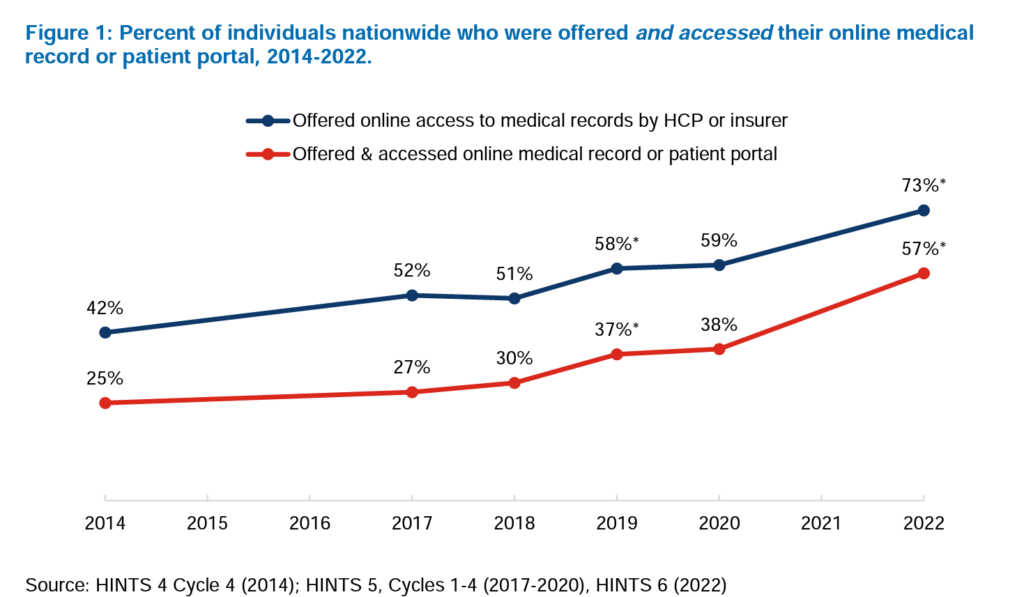
As of 2022, three in four consumers were offered online access to their medical records by a health care provider or health insurance plan, and well over one-half accessed their medical record or portal — growing by 50% over the two years, 2020 to 2022 (from 38% to 57%).
In 2022, 29% of patients accessed their online record at least 6 times over the year, and 25% did so between 3 and 5 times.
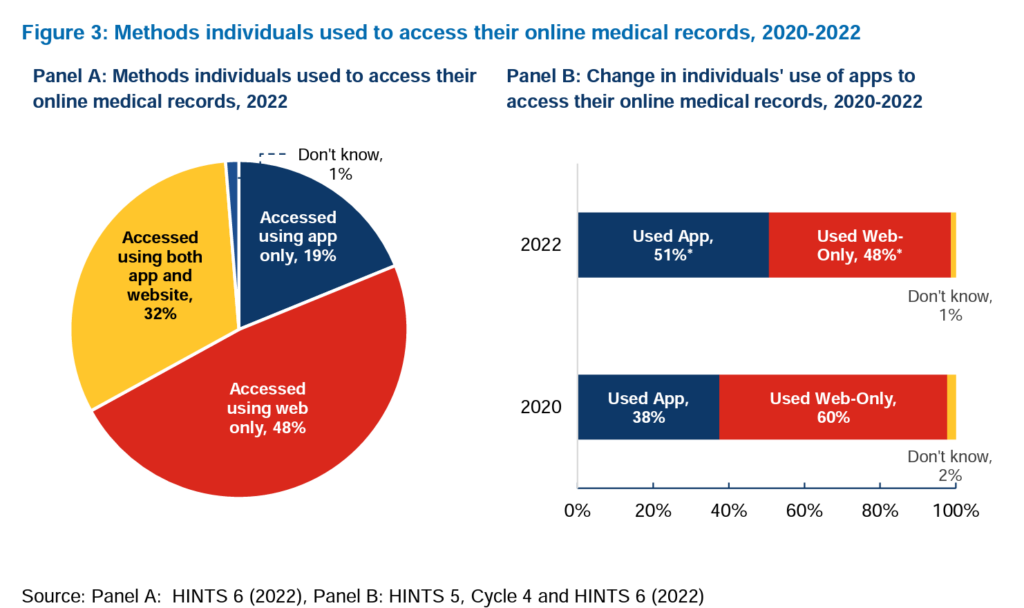
Note that peoples’ use of apps to access their online records grew over the two years, as well, with one-half of consumers using an app to access their EHR — a shift from 60% using only the web for medical record access in 2020 down to just under 50% in 2022.
When using an app (versus web only), patients were more likely to access their medical records 6 or more times in the past year, versus only 26% of patients using web-only.
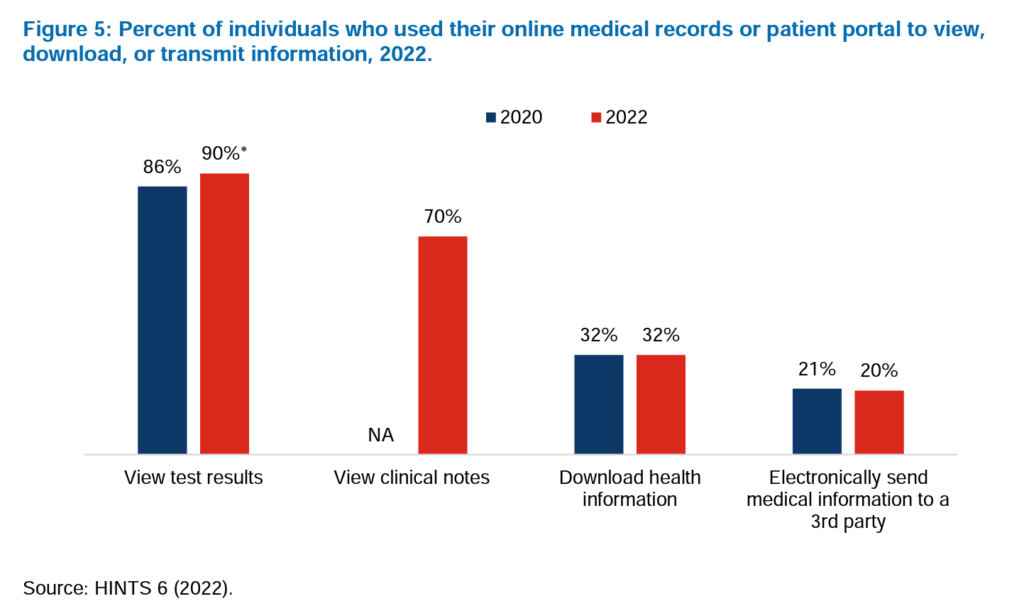
So what are patients most keen to access online in their medical records or portal?
Well that gets to “the truth” found in test results, as shown here. Test results are far and away the most important online personal health information for consumers to access, consistent from 202.
Interestingly, 70% of patients also viewed their clinical notes in 2022, newly-measured by the ONC survey.
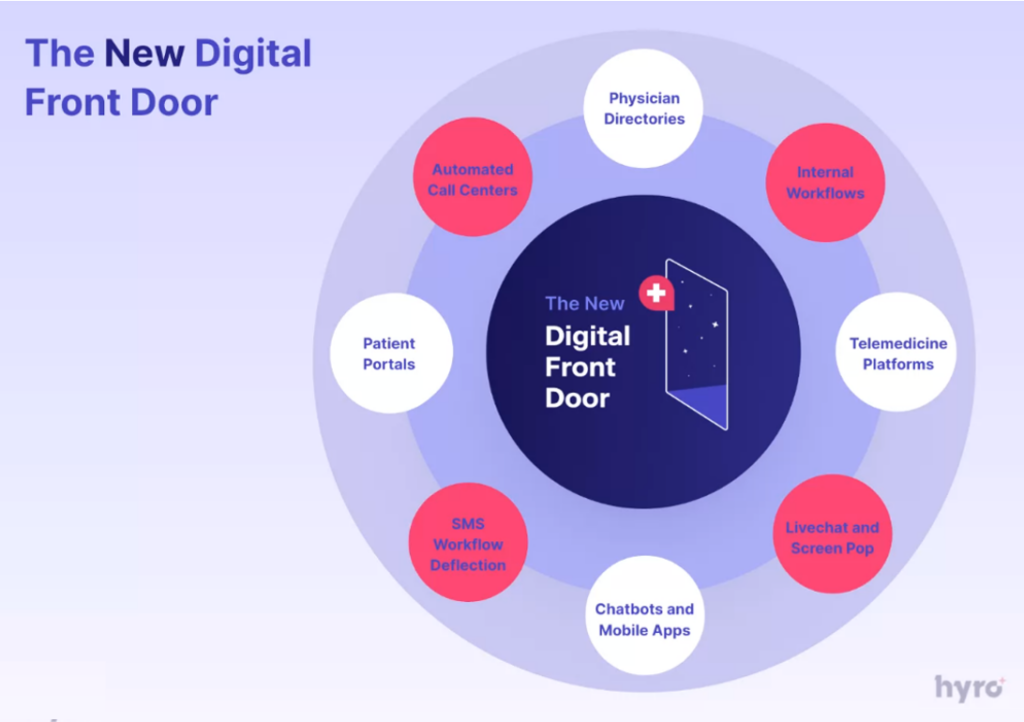
Health Populi’s Hot Points: Hyro convened a virtual summit on digital front doors on 26 October, kicking off with CEO Israel Krush’s stage-setting definition: that a digital front door embodies,
“All touchpoints where providers can digitally interact with patients to drive better access, engagement, and experience across the service continuum.”
That explanation comes from IDC’s work on digital front doors turbocharged during the pandemic.
Krush explained the importance of any digital front door in health care covering the entire patient journey, from initial awareness of symptoms and appointment scheduling to filling prescriptions, obtaining referrals, dealing with medical bills and asking general questions.
This requires an omnichannel approach which is not just “one” door, but many — begging the question, do we need a new-and-improved phrase for “digital front door?”


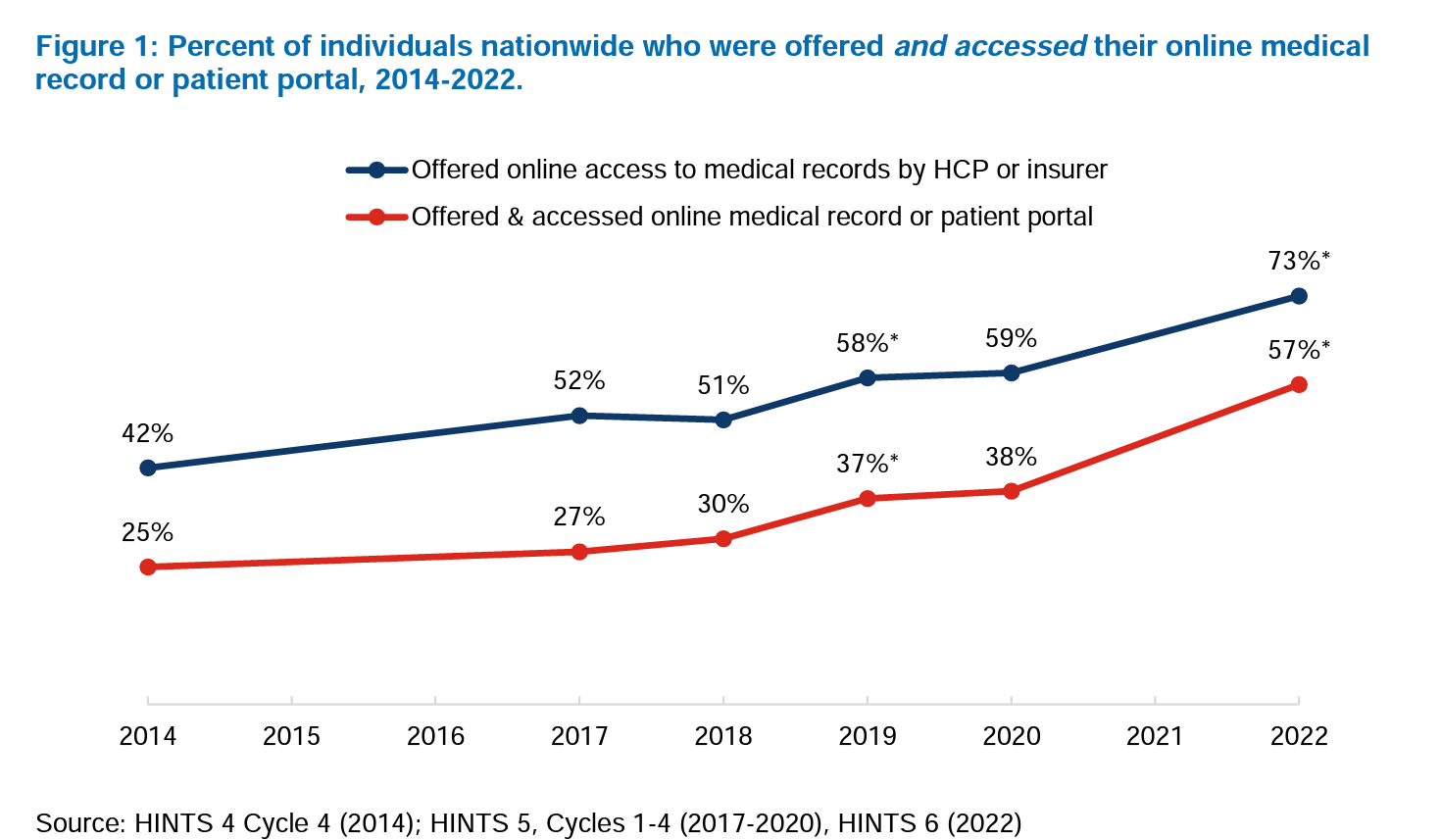


 Interviewed live on BNN Bloomberg (Canada) on the market for GLP-1 drugs for weight loss and their impact on both the health care system and consumer goods and services -- notably, food, nutrition, retail health, gyms, and other sectors.
Interviewed live on BNN Bloomberg (Canada) on the market for GLP-1 drugs for weight loss and their impact on both the health care system and consumer goods and services -- notably, food, nutrition, retail health, gyms, and other sectors. Thank you, Feedspot, for
Thank you, Feedspot, for  As you may know, I have been splitting work- and living-time between the U.S. and the E.U., most recently living in and working from Brussels. In the month of September 2024, I'll be splitting time between London and other parts of the U.K., and Italy where I'll be working with clients on consumer health, self-care and home care focused on food-as-medicine, digital health, business and scenario planning for the future...
As you may know, I have been splitting work- and living-time between the U.S. and the E.U., most recently living in and working from Brussels. In the month of September 2024, I'll be splitting time between London and other parts of the U.K., and Italy where I'll be working with clients on consumer health, self-care and home care focused on food-as-medicine, digital health, business and scenario planning for the future...